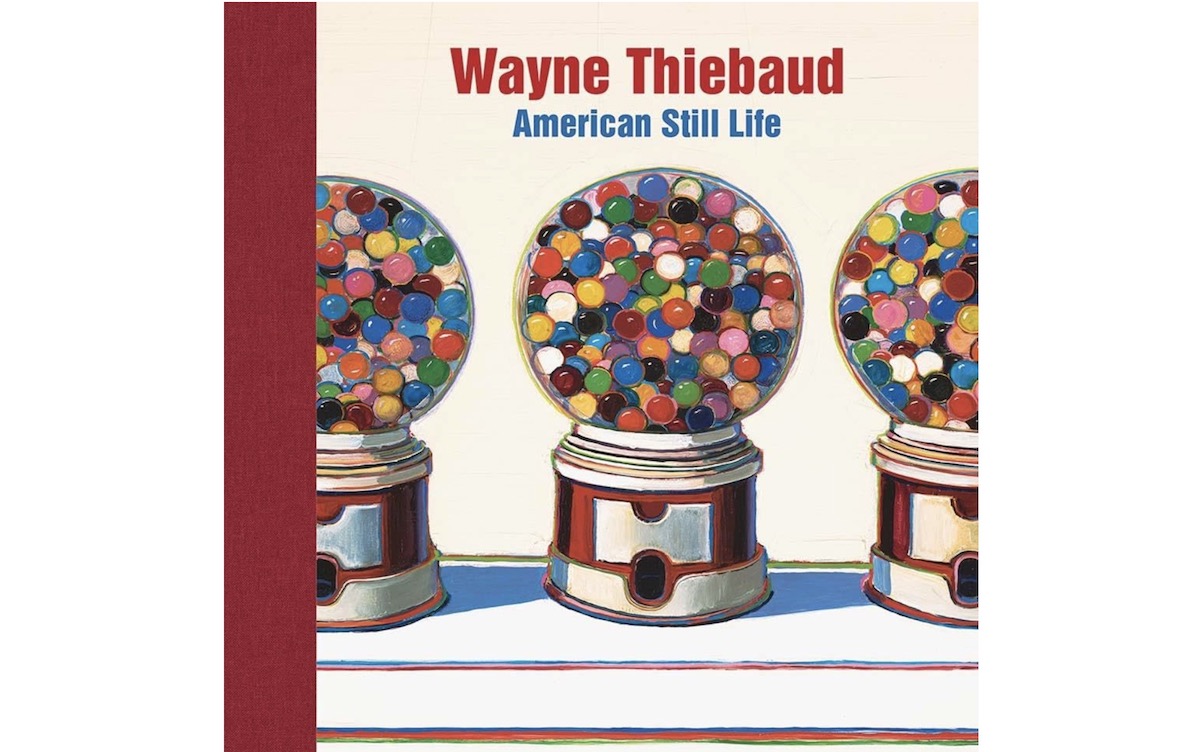Published to coincide with Wayne Thiebaud, American Still Life at The Courtauld Gallery, this catalogue offers a long-overdue introduction to one of the great American painters of the 20th century. Although Thiebaud’s name carries weight across the Atlantic, his work has never been the subject of a museum show in the UK before. The Courtauld’s exhibition and this accompanying volume, produced by Paul Holberton Publishing, aim to correct that absence.
Thiebaud (1920–2021) spent most of his life working in Sacramento, California, far from the coastal art capitals that dominated critical attention in the postwar period. His independence is part of what gives his art its power. While others pursued abstraction or irony, Thiebaud turned his gaze on the familiar—deli counters, diner food, gumball machines, rows of glossy cakes—rendered with extraordinary clarity and restraint. These are not nostalgic emblems of mid-century Americana but rigorous studies in form, colour and perception.
The catalogue makes this point elegantly, pairing reproductions of the artist’s most recognisable still lifes with essays that situate them within a broader history of painting. The connection to Chardin, Manet and Cézanne is not academic; it’s philosophical. Like his predecessors, Thiebaud found significance in ordinary things. His thickly worked surfaces, layered with luminous pigment, turn the most commonplace objects into meditations on time, labour and the act of seeing.
What becomes clear through the pages is Thiebaud’s refusal to separate modern life from painterly tradition. A row of lemon meringue pies assumes the compositional gravity of a 17th-century still life. Yet, the palette—acid blues, sherbet yellows, and the hard light of California—draws the viewer into a distinctly American present. The essays avoid sentimental readings and focus instead on Thiebaud’s precision: his measured brushwork, his subtle use of shadow, the way repetition transforms a scene into abstraction.
Thiebaud’s relationship to Pop Art was always one of misalignment rather than belonging. While critics were quick to place him alongside Warhol and Lichtenstein, his intentions ran counter to theirs. Where they mined consumer imagery for distance and wit, Thiebaud’s interest lay in the act of painting itself—the drag of the brush, the weight of pigment, the slow precision of making. His pies and gumball machines may echo the language of Pop, but they speak in an altogether different tone: attentive, humane, and stripped of irony. Against the cool detachment of his contemporaries, Thiebaud reaffirmed the possibility that sincerity and surface could coexist—that even the most mass-produced object might still hold beauty if looked at long enough.
For readers encountering him for the first time, this publication offers an articulate and well-paced survey of an artist who made modern painting humane again. It reproduces the intensity of his palette with rare fidelity, capturing the texture and heft of his paint. More than an exhibition companion, it reads as a portrait of a singular vision: an artist who understood that a slice of pie, perfectly observed, could hold the complexity of an entire era. – PCR 2025

